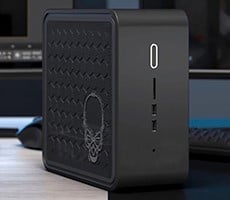Futuremark is a familiar name in the computer hardware industry, thanks to its popular PCMark and 3DMark benchmarking suites. We put AVADirect’s Mini Gaming PC through these tests and compared the scores to results from similar systems we’ve recently reviewed.
 |
| Futuremark PCMark 7 |
| Simulated Application Performance |
|
Most of the benchmarks here focus on video games, which is what you’d expect in a review of a system called a Mini Gaming PC. But you’ll also likely use your system for other tasks, as well, and that’s where PCMark 7 can give you a sense of the system’s capabilities. It runs multi-threaded tests that simulate office tasks and general usage, then gives the system a score.
PCMark 7 doesn’t weigh graphics performance nearly as heavily as most of the benchmarks in our lineup, so it’s no surprise that the Mini Gaming PC’s margin here, while substantial, isn’t earth-shattering. Even so, the AVADirect’s system handily defeats the systems we’ve tested to date.
 |
| Futuremark 3Dmark 11 and 3DMark Fire Strike |
| Simulated Gaming Performance |
|
Futuremark’s 3DMark 11 is getting a little long in the tooth, but we have a large pool of system scores, so we ran then test again with the AVADirect Mini Gaming PC. Like PCMark 7, this benchmark runs the system through a battery of tests and provides a score for comparison. But here, the tests are generally more graphics-oriented.
With 3DMark 11, the Titan-bearing Mini Gaming PC gets its chance to shine. It tops all non-Titan systems by a wide margin and begs for a benchmark that can really give it a challenge. That benchmark, as it happens, is Futuremark’s new 3DMark Fire Strike test, which has Normal and Extreme modes. Because Extreme mode is geared towards systems that have multiple graphics cards in CrossFire or SLI configurations, we opted for Normal mode, which runs at 1920 x 1080.


Because the test is so new, we have only one other system to compare it to at the moment: Maingear’s Potenza, which is carrying lighter firepower. Maingear’s system (as we tested) has an Intel Core i7 3770 and a GeForce GTX 660. The AVA Mini Gaming PC, on the other hand, has the Core i7 3770K and the Titan. Understandably, the Mini Gaming PC takes the lead here, as well.







